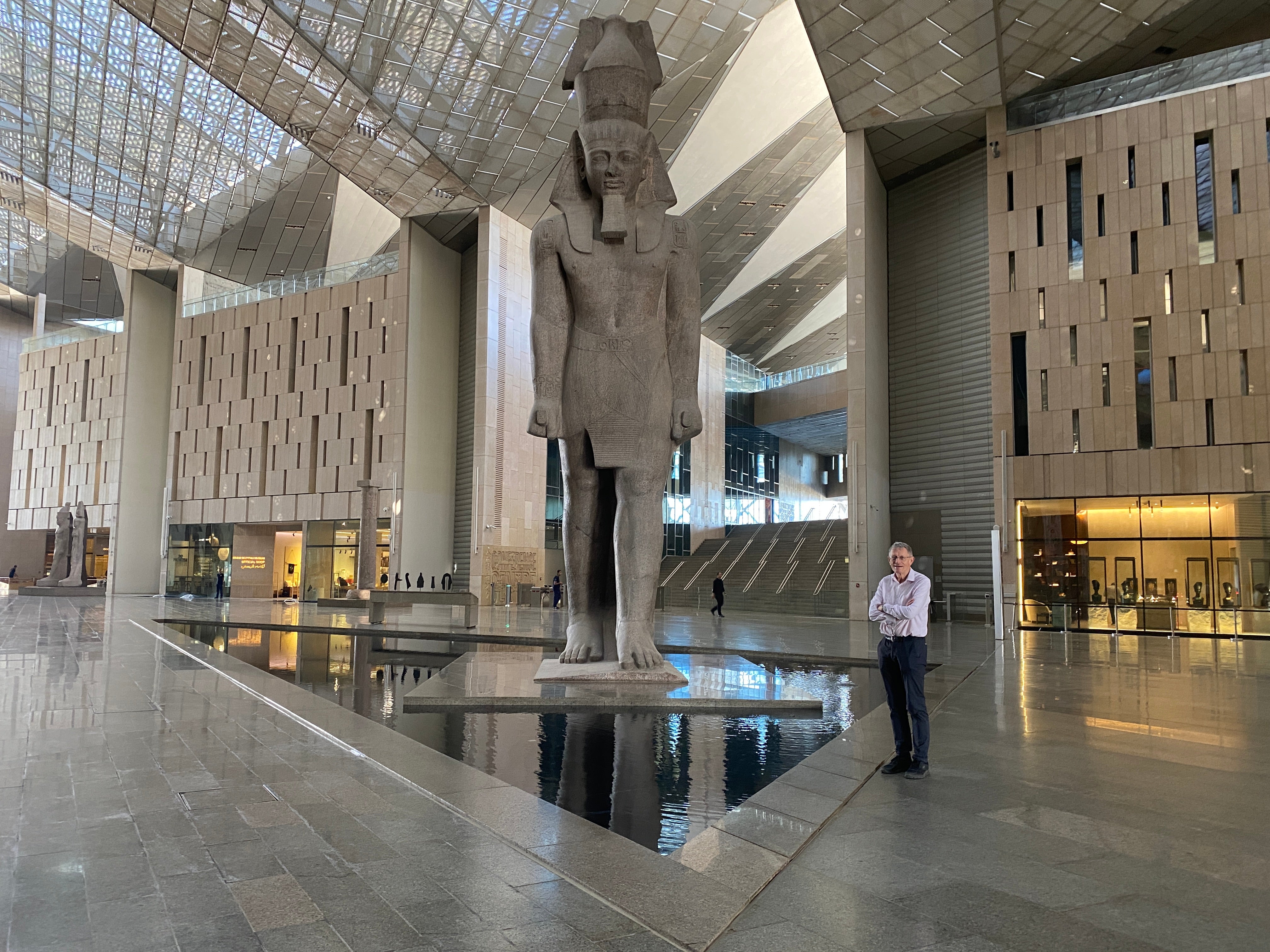Calamitously delayed transport projects are nothing new. Just ask long-suffering London commuters about the Elizabeth line, which opened – only partially completed – over three years late. Or German rail travellers, still waiting for Stuttgart’s Hauptbahnhof, seven years overdue. Passengers at Berlin airport can trump that; it opened nine years behind schedule.
Cultural venues, another crucial element of the travel experience, are far from immune to wildly optimistic predictions. What were they smoking at the Rijksmuseum in Amsterdam when they predicted a 21st-century refurbishment would take just three years? The site was off limits for a decade.
So cut the Grand Egyptian Museum some slack. The billion-dollar (£760m) project on the outskirts of Cairo has been dogged by logistical, political and financial delays. It will finally open to the public on Tuesday, 4 November – two decades after construction began, and a dozen years behind schedule.
Reasons cited for repeated postponements include the Arab Spring, the Covid pandemic and the war in Gaza. But with artifacts dating back five millennia, such a delay is barely a heartbeat.
This dazzling new structure is close to the Pyramids in Giza and mirrors their timeless geometry. The GEM, as everyone will call it, has been tantalising tourists for several years; I visited two years ago and paid £20 to enter the foyer.

It was money well spent to revel in the scale of the place and to gaze up at the 36-foot statue of Ramses II, rescued from his previous role overlooking a roundabout outside Cairo’s railway station. The building was constructed around this towering figure. Amazing – but frustrating to be so close to some of the most prized antiquities on Earth, hidden behind locked gallery doors.
Finally, the mesmerising timeline of Egypt’s millennia under the pharaohs will be revealed in spectacular surroundings. The aviation-turned-tourism minister Sherif Fathy calls it “Egypt’s gift to the world”. I call it Africa’s cultural pride and joy.
The GEM is the planet’s biggest museum. It has a footprint exceeding that of Vatican City. The sheer number of artifacts is boggling – far exceeding the total in the Louvre (now slightly depleted following the recent unfortunate theft from the Parisian palace).
The opening hours are generous: 9am to 6pm daily, extended on Saturdays and Wednesdays to 9pm. Just as well: were you to spend one minute gazing at each of the 50,000 pieces on display, it would take you 12 weeks to view the lot.
Most visitors, of course, will concentrate on the big-hitters – starting with the Tutankhamun collection. After a weekend of politicians and pageantry, the public opening is timed for Tuesday, 4 November. That is the 103rd anniversary of the day when the British archaeologist Howard Carter opened the Pharaoh’s lost tomb in 1922 in Luxor.
The “Golden Pharaoh” collection occupies two of the halls – with his burial mask no doubt performing the same magnetising role as the Mona Lisa in the Louvre. Yes, you will be able to take pictures and videos, but no “flash, tripods, selfie sticks [or] drones”, says the museum. Perhaps with influencers in mind, live streaming is banned.
You can book tickets online at visit-gem.com – the only official source of tickets. Foreigners pay $30 (£23). Unofficial websites are already selling tickets at well above the going rate.
Reputable tour operators, though, are buying up tickets to ensure their customers will be among the first to visit. Philip Breckner of Discover Egypt says his firm and its destination management company “have already pre-purchased several hundred entrance tickets”.
My advice to make the most of the welcome new table-topper of the heritage Premier League: sign up with a specialist. They will help you navigate through the exciting – and no doubt at first slightly chaotic – new world. Oh, and fly into the new Sphinx international airport.
The gateway is about 20 miles northwest, so not exactly treading on the toes of the mythical creature. But it is serene and efficient, while the main Cairo airport remains the polar opposite.
At the Grand Egyptian Museum, the builders have reached the finish line. Now the race to the past begins. The dynasties are waiting.
Simon Calder, also known as The Man Who Pays His Way, has been writing about travel for The Independent since 1994. In his weekly opinion column, he explores a key travel issue – and what it means for you.
Read more: How to fix Britain’s broken railways



0 Comments